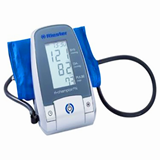Austrade
Significant investments into Australia from the major global biotechnology industry players are now commonplace. Australia’s favourable conditions include:
Strong take-up of ICT
Australia is one of the top economies in the world to take advantage of global information and communications telecommunications (ICT) developments (Source: World Economic Forum's Global Information Technology Report 2004-05)
Highly skilled workforce
Australia ranks fourth in the world for economic literacy and is in the top seven countries for skilled labour, IT professionals, finance skills and qualified engineers (Source: World Competitiveness Yearbook 2004).
Cost-competitive location
Australia ranks highly in terms of low income tax rates and competitive costs for medical device manufacturing, clinical trials and pharmaceutical drug manufacturing (Source: KPMG, Competitive Alternatives).
Strong commitment to research and development
Australia outranks major OECD countries - USA, Japan, Canada and UK for public expenditure on R&D as a percentage of GDP (Source: Australian Bureau of Statistics 2003).
Open and efficient regulatory environment
Australia's intellectual property regime is ranked above countries such as the USA, Japan, Hong Kong and Singapore (Source: World Competitiveness Yearbook 2004).
Dynamic financial services
Australia is one of the key centres for capital markets activity in the Asia-Pacific, providing a bridge between the USA and European time zones.
Australian researchers have a proud record in biological and molecular sciences with Australians:
- Discovering that Helicobacter pylori caused gastric ulcers.
- Mapping the surface enzyme neurominidase of the influenza virus.
- The first to purify and clone three of the major regulators of blood cell formation, contributing to our knowledge of how blood cells are formed.
Some current successes include:
Australian company Starpharma, has successfully completed phase one clinical trials of its HIV-preventive VivaGel [TM] after receiving clearance under the US Food and Drug Administration (FDA) regulations.
The Howard Florey Institute is the only laboratory in the world that directly records cardiac sympathetic nerve activity in heart failure and it is using this technique to investigate the causes of cardiac nerve activation in heart disease.
Garvan Institute's Diabetes & Obesity research team has achieved a world first with a genetically engineered mouse that eats more without gaining weight. Mice lacking a specific gene called c-Cbl (pronounced c-sybil) have a similar body weight to normal mice but have less fat, despite eating significantly more food.
Strong government commitment to research
The Commonwealth Scientific and Industrial Research Organisation (CSIRO) is one of the largest and most diverse research organisations in the world. Its biotechnology R&D is spread across 12 of the organisation's 20 divisions.
Fast facts - Australian biotechnology companies
The four main biotechnology sectors are biomedicine, agricultural, environmental and industrial. In 2004, 46 per cent of core biotech companies were in human therapeutics, 16 per cent in agricultural biotech and 15 per cent in diagnostics companies.
As at 2005, there were around 400 core biotechnology companies, up from 190 in 2001.
- Total number of people in full-time employment in biotechnology firms in Australia in 2005 was over 6000 (almost one-third were in R&D).
- Most companies continue to be based in Victoria, New South Wales and Queensland, followed closely by Western Australia and South Australia.
- 73 biotech firms are listed on the Australian Stock Exchange.
- In 2004, Australian inventors were granted 49 US biotechnology patents.
Investment and revenue
- In 2003–04, A$593 million was invested as venture capital across the healthcare and bioscience sector.
- In 2003, government expenditure on research and development amounted to A$5500 million (Hopper & Thorburn 2005, BioIndustry Review Australia and New Zealand).
- As at 31 December 2004, market capitalisation of 15 of Australia's leading biotechnology companies was A$8.26 billion.
- In December 2004, the total revenue of listed biotechnology companies was over A$2 billion.
International investments and partnerships
In 2004, Australian biotechs entered into 84 partnerships; 69 per cent with international organisations. Of these international partnerships, 40 per cent were with US firms (source: Biotech Business Indicators, Feb 2005).
Examples of international investments:
- Amrad and Merck (USA) has invested up to US$112 million (plus royalties) for the development of drugs in asthma, other respiratory diseases and oncology.
- Bristol-Myers Squibb (USA) has set up an Australian R&D arm.
- Pfizer (USA) spent more than $A40 million in 2004 on research in Australia through Pfizer Australian Research Fellowships in fields such as brain stem cell activity, HIV and neuropsychiatric disorders.
Examples of international partnerships:
- Cortical and Genzyme (USA) are developing of oral drugs for inflammatory diseases.
- Phenomix and Genentech (USA) are identifying and prioritise drug targets for immune disorders.
- Actye Biotechnology and Serono (Switzerland) are developing recombinant proteins using Actye's mammalian cell expression technology.
- Cogstate and Pacific Northwest Biotechnology (USA) are developing a drug to treat Alzheimer's disease.
Biomedicine
The biomedical sector is well-established in Australia – Howard Florey was awarded the Nobel Prize in 1945 for his role in developing penicillin.
Other Australian breakthroughs include creating the bionic ear, purifying and cloning three of the major regulators of blood cell formation: GCSF, GMCSF and LIF.
Underpinning this sector are excellent health care system and records, government support and academic research at universities at universities, hospitals, medical research centres and CSIRO.
Australia is ranked second behind Canada as the most cost effective location for biomedical R&D, ahead of USA, UK and Germany, particularly with reference to labour, salaries, utilities and income tax (Source: KPMG Competitive Alternatives).
Emerging areas in biomedicine
- Therapeutics - pharmocogenics, stem cell and tissue engineering, gene therapy, an understanding of the ageing process through research of genes at a molecular level, and a focus on microbial resistance.
- Clinical and pre-clinical trials.
- Medical devices and diagnostics - drug delivery methods using nanotechnology and biomaterial in optical devices.
- Biomarkers - diagnostic tools in pharmacogenomic and toxicogenomic profiles.
- Vaccine development - working on safer vaccines against infection and anti-biowarfare agents.
- Industrial biotechnology
- Biotechnology has long been used in the production of beer, wine and cheese.
- New industrial biotechnology focuses on replacing traditional chemical processes with more sustainable and environmentally friendly biological processes and developing new processes, such as genetically modified yeasts to improve fermentation.
There are a number of drivers for industrial biotechnology in Australia, including:
- a strong resources-based economy and a need for sustainable resource use and development
- pressure to reduce pollution
- the increasing cost of petroleum-based products for industrial processes
- the need to increase process efficiency to remain cost-competitive






-160x160-state_article-rel-cat.png)








